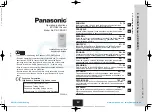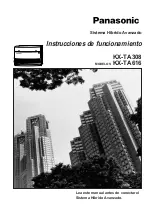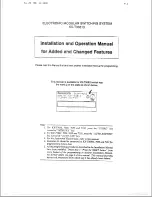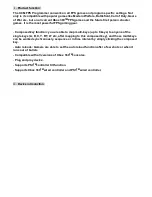
If the shielding gas cylinder is not connected, leave the valve cap in place on the cylin-
der.
The manufacturer's instructions must be observed as well as applicable national and in-
ternational regulations for shielding gas cylinders and accessories.
Danger from es-
caping shielding
gas
Risk of suffocation from the uncontrolled escape of shielding gas
Shielding gas is colourless and odourless and, in the event of a leak, can displace the
oxygen in the ambient air.
-
Ensure an adequate supply of fresh air with a ventilation rate of at least 20 m³/hour.
-
Observe safety and maintenance instructions on the shielding gas cylinder or the
main gas supply.
-
Close the shielding gas cylinder valve or main gas supply if no welding is taking
place.
-
Check the shielding gas cylinder or main gas supply for uncontrolled gas leakage
before every start-up.
Safety measures
at the installation
location and dur-
ing transport
A device toppling over could easily kill someone. Place the device on a solid, level sur-
face such that it remains stable
-
The maximum permissible tilt angle is 10°.
Special regulations apply in rooms at risk of fire or explosion
-
Observe relevant national and international regulations.
Use internal directives and checks to ensure that the workplace environment is always
clean and clearly laid out.
Only set up and operate the device in accordance with the degree of protection shown
on the rating plate.
When setting up the device, ensure there is an all-round clearance of 0.5 m (1 ft. 7.69
in.) to ensure that cooling air can flow in and out freely.
When transporting the device, observe the relevant national and local guidelines and ac-
cident prevention regulations. This applies especially to guidelines regarding the risks
arising during transport.
Do not lift or transport operational devices. Switch off devices before transport or lifting.
Before transporting the device, allow coolant to drain completely and detach the follow-
ing components:
-
Wirefeeder
-
Wirespool
-
Shielding gas cylinder
After transporting the device, the device must be visually inspected for damage before
commissioning. Any damage must be repaired by trained service technicians before
commissioning the device.
Safety measures
in normal opera-
tion
Only operate the device when all safety devices are fully functional. If the safety devices
are not fully functional, there is a risk of
-
injury or death to the operator or a third party
-
damage to the device and other material assets belonging to the operator
-
inefficient operation of the device
Any safety devices that are not functioning properly must be repaired before switching on
the device.
13
EN
Содержание CU 1100i
Страница 2: ......
Страница 16: ...16...
Страница 17: ...General information 17...
Страница 18: ...18...
Страница 26: ...26...
Страница 27: ...Connections and mechanical com ponents 27...
Страница 28: ...28...
Страница 31: ...Installation and commissioning 31...
Страница 32: ...32...
Страница 45: ...Close the cover on the cooling unit connection 3 45 EN...
Страница 46: ...46...
Страница 47: ...Troubleshooting 47...
Страница 48: ...48...
Страница 53: ...Care maintenance and disposal 53...
Страница 54: ...54...
Страница 70: ...70...
Страница 71: ...Technical data 71...
Страница 72: ...72...
Страница 82: ...82...
Страница 83: ...83 EN...














































